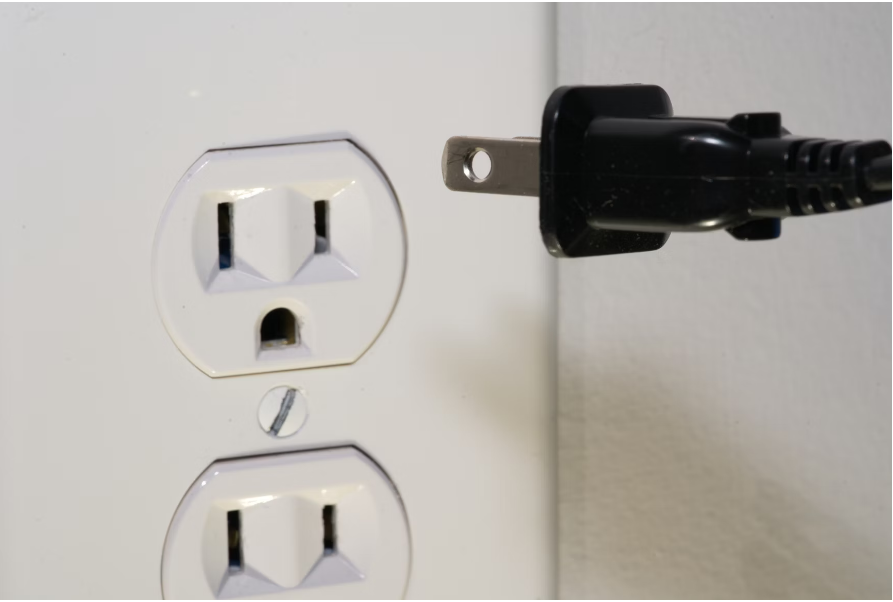Power cords are essential to powering all our electronic devices and appliances safely and reliably when using electricity in our homes, offices, and other spaces.
However, if not used properly, power cords can also pose potential safety hazards that are important to be aware of. From overloaded outlets to fraying and damaged cables, unchecked power cords can increase the risk of electrical fires, shocks, and equipment damage. This is especially concerning as our reliance on electronic devices and the number of gadgets in our lives continues to grow exponentially.
This article will provide essential power cord safety tips to help ensure your safe use of electricity through these necessary connection points.
1. Inspect Cords Regularly
One of the most crucial power cord safety practices is regularly inspecting your cords for wear and damage. Give cords a once-over every few months to check for cracks, fraying, exposed wires, brittleness, and other issues.
Damaged power cords should always be replaced immediately, as they can cause shorts, fires, and electric shocks if used in a compromised state.
It’s best to inspect cords thoroughly during home or office downtime. Gather all cords in one place with good lighting, such as on a table near a window. This makes it easier to examine each cord from end to end carefully. Twist and flex the power cords as you look them over so you can detect any weak spots that aren’t visible from a stationary inspection. Catching minor issues before they worsen helps prevent potential hazards.
Pay extra close attention to areas where the cord flexes the most, such as near the plug head and where the cord enters any devices. Continually flexing over thousands of uses in these areas eventually leads to cracks or exposed wires if the insulation wears down. Inspect plug heads; any damage could cause sparks or shorts at the power source. Replace individual plugs or entire cords if heads show damage.

2. Avoid Overloading Outlets
It’s tempting to plug many devices into power strips or use multi-plug extension cords to maximize outlet usage. However, overloading outlets can create fire risks through overloaded circuits or damaged cords from being squeezed too tightly together. For safety, stay within the outlets’ rated wattage or use only a few adapters/extensions simultaneously.
Limiting each outlet to drawing no more than half its rated wattage is best as a general guideline. This ensures the circuit is manageable if multiple devices boost usage simultaneously for any reason.
A loaded power strip has less capacity than a direct wall outlet, too, so be even more conservative when plugging multiple things directly into extensions or surge protectors. Do the sum of all equipment wattages to calculate the expected draw and leave extra headroom below the stated limits. Overloading, even temporarily, can create excess heat buildup and pose potential fire risks over the long run.
3. Secure Cords Safely
To prevent tripping hazards, ensure cords are laid out carefully without creating kinks, tight bends, or being rolled over. Also, it would help if you used cord management strips on floors and furniture edges to safely route cords from foot traffic paths. Never run cords under mats or rugs where heat can build up. Coiled or bundled cords pose additional risks that are easy to avoid.
Running cables flush against the wall, or baseboards keeps them farther out of regular foot traffic. Cable ties or Velcro straps can also help restrain loose cords to the backs of desks, entertainment centers, and other furniture near outlet areas. Make cord routing a permanent part of any setup.
4. Watch for Exposed Wires
Frayed, cracked, or damaged insulation exposing internal cord wires is a significant hazard. An exposed wire can cause electric shocks or shorts that, in the worst cases, can even become life-threatening. The older a cord gets, the more likely insulation will break down in certain highly flexed areas. Checking for any sign of exposed wires is so essential. Pay close attention to the ends of the cords near the plug head.
Continual flexing when plugging and unplugging makes these areas prone to minor nicks over many uses. Even a pinhole-sized break that isn’t visible can pose a shock risk. In advanced cases, green or black discoloration around these sections often indicates delicate wiring is no longer fully protected.
5. Avoid Moisture and Heat
Heat and moisture are big enemies of power cords, as both can rapidly damage insulation meant to protect internal wiring. Never operate devices where cords could get wet, such as by sinks, and avoid leaving them on basement or garage floors that could flood. Moisture allows current to travel wherever it wants, bypassing safe internal pathways.
Similarly, avoid placing cords in direct sunlight whenever possible. Ultraviolet light breaks down plastics over time, leaving them brittle. Cords will also get very hot laid out in sunbeams. Both UV exposure and excessive heat cause insulation to crack earlier than it should from normal usage alone.
Also, be cautious of positioning cords too near other heat sources indoors. This includes radiators that blast out warm air all winter, under-cabinet kitchen appliances, and ovens that get hot during and after use. Mounting televisions high on a wall also keeps cords from accidental contact with warming bulbs.
Final Thoughts
By carefully inspecting power cords regularly, only using them for their intended applications, providing safe storage, and keeping cords away from potential hazards, you help minimize risks. Promptly replacing damaged cords further enhances safety.
Being mindful of basic practices empowers you to safely use power cords without worrying for many years while protecting others under your care, whether at home or in a work environment. Let these guidelines help keep electricity a trustworthy servant, not a potential threat, in your world.







